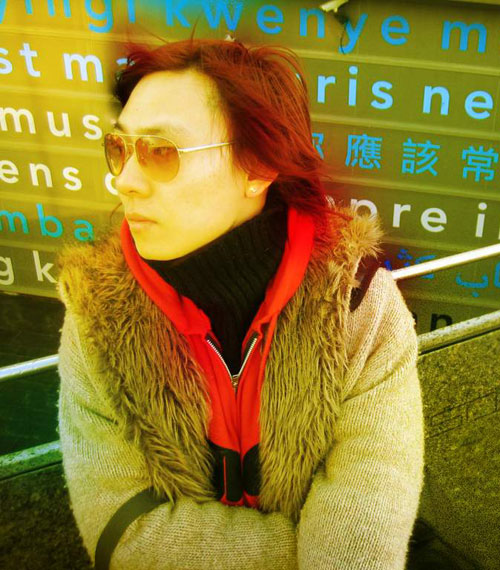主办:
TIME OUT Beijing
北京宋洋美术文化艺术发展有限公司
展览时间 :
2月10(星期六)下午三点开幕酒会,展期至3月15日
展览地点 :
北京大山子798艺术南区“四合苑798项目空间”画廊
TEL:0086 10 8225 1369
E-MAIL:songyangart@sina.com

Hungry for an icon: the animation art of Song Yong
Stacey Duff
Young Chinese audiences, at least those born in late 1970s and after, have grown up on cartoons and animation. Although Japanese and American cartoon industry has left a deep impression on those audiences, China’s domestic cartoon industry has yet to match its foreign competitors in terms of influence on the mainland. Song Yang, who began seriously working as an animation artist at the age of 16, has emerged as the country’s most dynamic and influential young cartoon artist, whose influence at home is matched with increasing recognition abroad. But the most important message behind his work is that China is capable of producing a thriving native cartoon industry, although getting there won’t be easy.
When we invited Song Yang over a year ago to come up with illustrations for Time Out, we were immediately struck with the visceral energy of his work. Looking at Song Yang’s series for Time Out, Song Yang’s People, the reader is first struck with the artist’s impeccable sense of street life: urban jungles are great incubators for creativity. Beijing is no exception to this rule, and in many ways the city illustrates that that point to the nth degree, not only because changes here are happening at breakneck speed, but because those changes are happening even as China is increasingly more aware of itself as a potential cultural player (not just a passive observer) on the world stage. Song Yang’s People captures that speed without abandoning compassion for his subjects – compassion being the root of any work of art, whatever else it is attempting to do on the surface.
The second major component of this exhibition, which Song Yang’s studio began developing in 2005, represents a slightly more commercial but no-less exciting development in Song Yang’s work, because finally, a Chinese animation artist is coming up with a native cartoon icon. Song Yang and his studio have created Bad Girl, a mesmerizing series of that revolves around a jaded character, named Little P. The link between Song Yang’s People and Little P is not pronounced but it is definite: like the real-life characters that his People series is based on, the more fantasy-driven Little P is every bit as urban. ‘Little P’, Song Yang recently explained to us, ‘has to have the playfulness and loudness of urban youth. But she has to have integrity too. She has to really be able to represent the present times.’
One final note must be emphasized in approaching this exhibition: that is, the link between commercial cartoon art and the recent explosion of cartoon art in the Chinese art world proper cannot be underestimated. China’s latest generation of artists, the Post-70s generation, have been indelibly influenced by the cartoons they watched growing up. Most of those cartoons, whether on screen or in comic books, were pirated and were funneled to China from the outside. If more artists like Song Yang – who works in both high-brow and demotic genres – steps forward, China’s next generation will not have to look outside of China for influences. They too will find their own icon. They too, like Song Yang, will have the confidence to create an authentic visual language, through cartoons, ‘to represent the present times.’
Since 2005, art critic Stacey Duff has served as the art editor for Time Out Beijing.